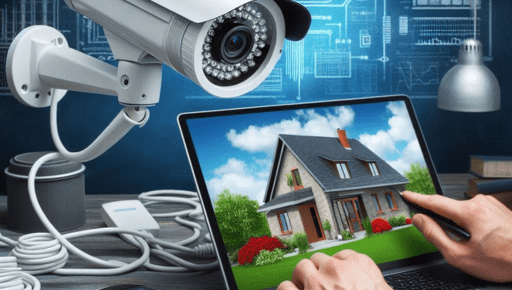In the age of digital transformation, where devices and systems are becoming increasingly interconnected, the Internet of Things (IoT) stands out as a transformative force. IoT represents a network of physical objects embedded with sensors, software, and connectivity that enables them to collect and exchange data. In this article, we will explore the fascinating world of IoT, its applications, challenges, and the profound ways it is connecting and reshaping the world around us.
What is the Internet of Things?
The Internet of Things, often referred to as IoT, is a concept that has gained significant momentum in recent years. It involves the interconnection of everyday objects, devices, and systems to the internet, allowing them to collect and exchange data. These objects can range from household appliances and industrial machinery to wearable devices and even vehicles.
At the heart of IoT lies the integration of sensors and communication technology into these objects. These sensors gather data from the environment or the device itself and transmit it over the internet to a central hub or other connected devices for processing and analysis. The insights derived from this data can then be used to improve efficiency, make informed decisions, and enhance user experiences.
The Pervasiveness of IoT
One of the key characteristics of IoT is its widespread applicability. IoT has the potential to impact almost every aspect of our lives. Here are some examples of how IoT is being used across various domains:
- Smart Homes: IoT is revolutionizing the way we interact with our homes. From thermostats that learn your temperature preferences to smart lighting that adjusts to your mood, connected devices are making our homes more efficient and convenient.
- Healthcare: Wearable devices like fitness trackers and smartwatches collect and transmit health data to doctors and patients in real time, enabling better monitoring and early intervention.
- Industrial IoT (IIoT): In manufacturing and industry, IIoT is optimizing processes, predicting maintenance needs, and enhancing overall efficiency. Sensors in machinery can alert operators to potential breakdowns before they occur, reducing downtime and maintenance costs.
- Agriculture: IoT is being used to monitor soil conditions, weather, and crop health in agriculture. This data helps farmers make more informed decisions about irrigation, fertilization, and harvesting.
- Transportation: Connected vehicles and smart traffic systems are enhancing road safety, reducing congestion, and enabling autonomous driving.
- Smart Cities: Municipalities are using IoT to improve urban living. This includes smart street lighting that adjusts to traffic patterns, waste management systems that optimize collection routes, and environmental monitoring to reduce pollution.
- Energy: IoT is being used to manage and optimize energy consumption in homes and industrial facilities, contributing to energy savings and sustainability efforts.
Challenges and Concerns
While IoT holds immense promise, it is not without its challenges and concerns. Some of the key issues include:
- Security: IoT devices can be vulnerable to cyberattacks. Poorly secured devices can be exploited to gain unauthorized access to networks or gather sensitive data. Ensuring robust security measures is paramount.
- Privacy: IoT devices collect a significant amount of data, raising concerns about personal privacy. Striking a balance between data utility and individual privacy is an ongoing challenge.
- Interoperability: As the number of IoT devices and platforms grows, ensuring interoperability between different devices and systems is critical to achieving the full potential of IoT.
- Data Overload: The sheer volume of data generated by IoT devices can be overwhelming. Effective data management and analysis are necessary to derive valuable insights.
- Regulation: IoT operates in a complex regulatory landscape, with various data protection and privacy laws that can vary from region to region. Ensuring compliance is essential.
The Future of IoT
The future of IoT is marked by continued growth and innovation. As technology advances, we can expect IoT to become even more pervasive and integral to our daily lives. Here are some key trends and developments to watch for:
- 5G Connectivity: The rollout of 5G networks will significantly enhance IoT capabilities by providing faster and more reliable connections, making real-time communication and applications more seamless.
- Edge Computing: IoT devices are generating massive amounts of data, and edge computing, which processes data closer to the source, will become more critical to reduce latency and improve efficiency.
- AI and Machine Learning: IoT will increasingly benefit from AI and machine learning, which can analyze vast amounts of data and enable devices to make intelligent decisions.
- Sustainability: IoT will play a pivotal role in sustainability efforts, from managing energy consumption to reducing waste and optimizing resource utilization.
- Healthcare and Wellness: IoT will continue to transform the healthcare industry, with remote patient monitoring, predictive diagnostics, and personalized treatments.
- Autonomous Systems: IoT will be at the core of autonomous systems, from self-driving cars to drones and robotic automation.
Conclusion
The Internet of Things is redefining the way we interact with the world around us. From our homes to our workplaces, from healthcare to transportation, IoT is revolutionizing industries and enhancing our quality of life. While it brings forth a world of opportunities, it also presents challenges, particularly in terms of security and privacy.
As IoT continues to evolve, it is essential for individuals and organizations to embrace this transformative technology while also being vigilant about addressing the associated risks. With the right strategies and a commitment to security and privacy, IoT has the potential to connect and reshape the world in ways we are only beginning to imagine. It’s a journey that promises to enhance our lives and shape the future of technology and connectivity.



